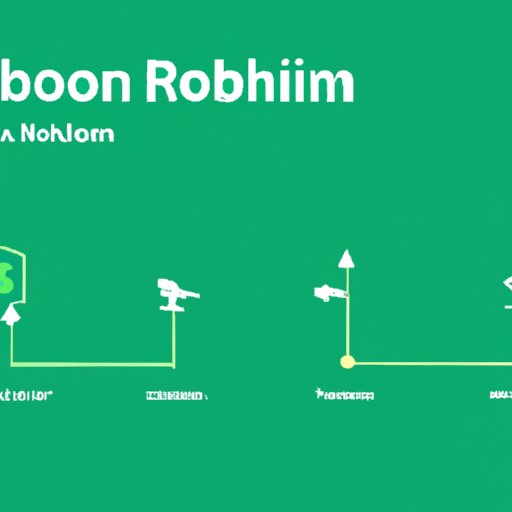
I. Introduction
Robinhood is a popular mobile brokerage app launched in 2013 that has been disrupting the industry with its commission-free trading model. The platform has grown to be a favorite among millennial investors, who appreciate its accessibility, ease of use, and affordability. In this article, we will explain how Robinhood makes money and help you understand its business model.
II. Robinhood’s Payment for Order Flow
Payment for Order Flow (PFOF) is a practice where brokers sell their customers’ orders to market makers like Citadel Securities, who execute the trades. In exchange, the market maker pays the broker a fee, which can vary depending on the order’s size and type. Robinhood has been at the center of controversy regarding PFOF as critics say it incentivizes brokers to sell customer orders to market makers who may not always give the best price.
Despite the criticism, Robinhood has been using PFOF since its inception, and it is one of the primary ways the platform generates revenue. In the first quarter of 2021, Robinhood reported that PFOF accounted for 75% of its total revenue.
III. Understanding the Underlying Mechanics of Robinhood’s Commission-free Trading
Robinhood is able to offer commission-free trading by streamlining the trading process and reducing overhead costs. The platform has no physical offices, relying instead on technology to execute trades. Robinhood also offers limited customer support services, mainly through its website and app.
Robinhood generates revenue by internalizing its customers’ trades, meaning it aggregates all the buy and sell orders and executes them within its platform, rather than routing them to external market makers. Robinhood then profits from the price difference between the buy and sell orders, also known as the bid-ask spread.
While commission-free trading is a significant perk, there are potential downsides to consider. For instance, Robinhood’s price execution may not always be the best, and it may not have access to the most favorable trading prices.
IV. How Robinhood Makes Money by Offering a Premium Trading Experience Without Charging Fees
Robinhood’s premium offering, Robinhood Gold, provides users with more advanced research tools, margin trading, and instant deposits. The subscription service starts at $5 per month and can go up to $25 per month, depending on the user’s needs.
Robinhood monetizes its Gold service by charging a percentage interest rate on the borrowed funds and collecting margin interest from users who borrow against the value of their investments. Robinhood also generates revenue through its securities lending program, where it lends out users’ securities to other traders for a fee.
However, Robinhood Gold has received criticism for encouraging users to take on more leverage, potentially increasing the risk of loss.
V. Analyzing Robinhood’s Financials: Where the Brokerage’s Revenue Streams Come From
As of March 31, 2021, Robinhood has reported $522 million in revenue. In comparison, the platform generated $128 million in revenue in the first quarter of 2020, indicating its exponential growth.
Robinhood’s primary revenue streams come from PFOF, options trading, and Robinhood Gold subscriptions. The company has also introduced cryptocurrency trading, generating additional revenue through its cryptocurrencies’ bid-ask spread. In 2020, Robinhood reported that 38% of its revenue came from cryptocurrency trading.
Despite its revenue growth, Robinhood still faces potential regulatory hurdles and increased competition in the online brokerage space.
VI. Robinhood’s Secrets Unveiled: Exploring its Revenue Model and Offering Some Thoughts on Its Future
Robinhood’s revenue model has been praised for its disruptive nature, but it has also been criticized for incentivizing brokers to prioritize profit over customers’ execution quality. The market has recently seen new players enter the commission-free trading space, such as SoFi and Webull, indicating potential increased competition for Robinhood.
Robinhood faces uncertainty regarding its future as it continues to grapple with the fallout from the recent GameStop stock pricing controversy and potential regulatory changes.
However, Robinhood’s user base continues to grow, with the platform reporting 18 million funded accounts as of Q1 2021. Robinhood’s expansion into new products such as cryptocurrencies and fractional shares may also aid in its growth and revenue generation.
VII. Conclusion
To summarize, Robinhood makes money primarily through Payment for Order Flow and internalizing customers’ trades. Robinhood also generates revenue through its Robinhood Gold subscription service and cryptocurrencies trading. While Robinhood’s commission-free trading model has disrupted the industry, customers should be aware of its potential risks and downsides.
Overall, to navigate Robinhood’s business model, users should be proactive in understanding its revenue streams and any potential downside risks.





